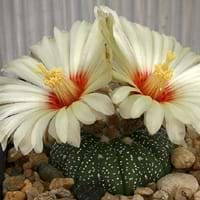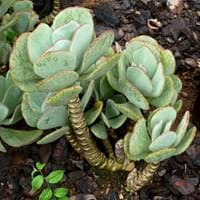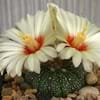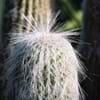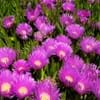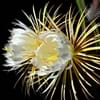About Sand Dollar Cactus and Cotyledon
Life Span
Perennial
Perennial
Type
Cactus, Flowering Plants
Shrub
Origin
Mexico, Texas
Eastern Africa, Southern Africa
Types
Not Available
Epigeal, Hypogeal
Number of Varieties
Not Available
Habitat
Desert, In desert grasslands, Rocky areas
Coastal sand dunes, Wild
USDA Hardiness Zone
13-15
10-15
Sunset Zone
21,22,23,24
Not Available
Habit
Oval or Rounded
Not Available
Minimum Height
Not Available
Minimum Width
Not Available
Flower Color
Red, Yellow
Yellow, Red, Green, Orange
Flower Color Modifier
Not Available
Not Available
Fruit Color
Green, Pale Pink
Green
Leaf Color in Spring
Not Available
Green, Blue Green
Leaf Color in Summer
Not Available
Green, Blue Green
Leaf Color in Fall
Not Available
Green, Blue Green
Leaf Color in Winter
Not Available
Not Available
Leaf Shape
Not Applicable
Reniform
Plant Season
Not Available
Spring, Summer, Fall, Winter
Sunlight
Not Available
Full Sun, Partial Sun
Growth Rate
Not Available
Medium
Type of Soil
Not Available
Sand
The pH of Soil
Not Available
Neutral
Soil Drainage
Not Available
Well drained
Bloom Time
Not Available
Indeterminate
Repeat Bloomer
Not Available
Yes
Tolerances
Not Available
Drought
Where to Plant?
Ground
Container, Ground, Pot
How to Plant?
Seedlings, Transplanting
reseeds, root cutting
Plant Maintenance
Medium
Medium
Watering Requirements
Needs very little water
Do Not over Water, Keep the Soil well drained
In Summer
Lots of watering
Lots of watering
In Spring
Moderate
Moderate
In Winter
Average Water
Average Water
Soil pH
Not Available
Neutral
Soil Type
Not Available
Sand
Soil Drainage Capacity
Not Available
Well drained
Sun Exposure
Not Available
Full Sun, Partial Sun
Pruning
Remove damaged leaves, Remove dead branches, Remove dead leaves
Remove damaged leaves, Remove dead branches, Remove dead leaves
Fertilizers
All-Purpose Liquid Fertilizer
All-Purpose Liquid Fertilizer
Pests and Diseases
Dry root rot, Root mealy bugs
Red blotch
Plant Tolerance
Drought
Drought
Flower Petal Number
Not Available
Single
Showy Fruit
Not Available
No
Edible Fruit
Not Available
No
Fragrant Flower
Not Available
No
Fragrant Fruit
Not Available
No
Fragrant Leaf
Not Available
No
Fragrant Bark/Stem
Not Available
No
Showy Foliage
Not Available
Yes
Showy Bark
Not Available
No
Foliage Texture
Bold
Bold
Foliage Sheen
Not Available
Matte
Invasive
Not Available
No
Self-Sowing
Not Available
No
Attracts
pollinators
Not Available
Allergy
Not Available
Kidney Disease
Aesthetic Uses
Beautification, Showy Purposes
Formal Garden, Hanging Basket
Beauty Benefits
Not Available
Not Available
Environmental Uses
Air purification
Air purification
Medicinal Uses
Not Available
Not Available
Part of Plant Used
Flowers
Beans
Other Uses
Used as Ornamental plant
Basketary, Edible seed
Used As Indoor Plant
Yes
Yes
Used As Outdoor Plant
Yes
Yes
Garden Design
Not Available
Container, Houseplant, Mixed Border, Rock Garden, Wall
Botanical Name
Astrophytum asterias
COTYLEDON
Common Name
Star Cactus, Sand Dollar Cactus
Pig's ear, Dog's ear
In Hindi
रेत डॉलर कैक्टस
बीजपत्र
In German
Sand Dollar Cactus
Cotyledon
In French
Sand Dollar Cactus
Cotyledon
In Spanish
Sand Dollar Cactus
Cotyledon
In Greek
Sand Dollar Cactus
κοτυληδών kotylēdōn
In Portuguese
Cacto do dólar de areia
Cotyledon
In Polish
Sand Dollar Cactus
Liścień
In Latin
Sand Dollar Cactus
Cotyledon
Phylum
Magnoliophyta
Not Available
Class
Magnoliopsida
Magnoliopsida
Order
Caryophyllales
Rosales
Family
Cactaceae
Crassulaceae
Genus
Astrophytum
Cotyledon L.
Clade
Angiosperms, Core eudicots, Eudicots
Rosids
Tribe
Cacteae
Not Available
Subfamily
Cactoideae
Not Available
Properties of Sand Dollar Cactus and Cotyledon
Wondering what are the properties of Sand Dollar Cactus and Cotyledon? We provide you with everything About Sand Dollar Cactus and Cotyledon. Sand Dollar Cactus doesn't have thorns and Cotyledon doesn't have thorns. Also Sand Dollar Cactus does not have fragrant flowers. Sand Dollar Cactus has allergic reactions like Not Available and Cotyledon has allergic reactions like Not Available. Compare all the properties and characteristics of these two plants. Find out which of these plant can be used as indoor plant. If you are interested to decorate your house and garden, find out aesthetic uses, compare them and select the plant which will beautify your surrounding. Along with beautification, try comparing medicinal and edible uses of Sand Dollar Cactus and Cotyledon and you can choose the plant having best and most benefits.
Season and Care of Sand Dollar Cactus and Cotyledon
Season and care of Sand Dollar Cactus and Cotyledon is important to know. While considering everything about Sand Dollar Cactus and Cotyledon Care, growing season is an essential factor. Sand Dollar Cactus season is Not Available and Cotyledon season is Not Available. The type of soil for Sand Dollar Cactus is Not Available and for Cotyledon is Sand while the PH of soil for Sand Dollar Cactus is Not Available and for Cotyledon is Neutral.
Sand Dollar Cactus and Cotyledon Physical Information
Sand Dollar Cactus and Cotyledon physical information is very important for comparison. Sand Dollar Cactus height is Not Available and width Not Available whereas Cotyledon height is 30.00 cm and width 30.00 cm. The color specification of Sand Dollar Cactus and Cotyledon are as follows:
Sand Dollar Cactus flower color: Red and Yellow
Sand Dollar Cactus leaf color: Not Available
Cotyledon flower color: Yellow, Red, Green and Orange
- Cotyledon leaf color: Green and Blue Green
Care of Sand Dollar Cactus and Cotyledon
Care of Sand Dollar Cactus and Cotyledon include pruning, fertilizers, watering etc. Sand Dollar Cactus pruning is done Remove damaged leaves, Remove dead branches and Remove dead leaves and Cotyledon pruning is done Remove damaged leaves, Remove dead branches and Remove dead leaves. In summer Sand Dollar Cactus needs Lots of watering and in winter, it needs Average Water. Whereas, in summer Cotyledon needs Lots of watering and in winter, it needs Average Water.
